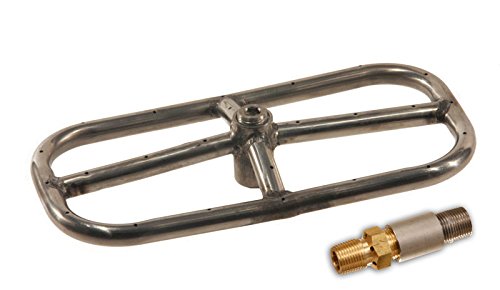I'm currently doing an owner build, and wanted to build a fire table. It's been something I've planned to take on as a DIY project. Let me explain:

On the upper portion of the deck(behind the pool, 1' from the edge), I want to build a 12" high table that spans across the top of the deck 20 feet, almost all the way to the spa.
On this table, I want 4 fire pits directly above the water spillway scuppers. The pits will be 12x6 inches (same width as the scuppers). Something like this

Do any of you have a good recommendation of what to use for a pan to hold the burner and glass?
Here's my diagram:

On the east side of the deck there is a 1.5" gas stubbed out for this.
Few questions. What kind of pipe can be used for this outdoor setup? Is Stainless steel a must?
Another question: Where should I reduce the 1.5" down for best results?
I planned to plumb this myself, can anyone help me with a diagram how I should best run this?
I appreciate any help or advice you might have, or suggestions on what you would do differently.
Thanks, Nick in Socal

On the upper portion of the deck(behind the pool, 1' from the edge), I want to build a 12" high table that spans across the top of the deck 20 feet, almost all the way to the spa.
On this table, I want 4 fire pits directly above the water spillway scuppers. The pits will be 12x6 inches (same width as the scuppers). Something like this

Do any of you have a good recommendation of what to use for a pan to hold the burner and glass?
Here's my diagram:

On the east side of the deck there is a 1.5" gas stubbed out for this.
Few questions. What kind of pipe can be used for this outdoor setup? Is Stainless steel a must?
Another question: Where should I reduce the 1.5" down for best results?
I planned to plumb this myself, can anyone help me with a diagram how I should best run this?
I appreciate any help or advice you might have, or suggestions on what you would do differently.
Thanks, Nick in Socal


